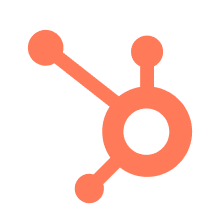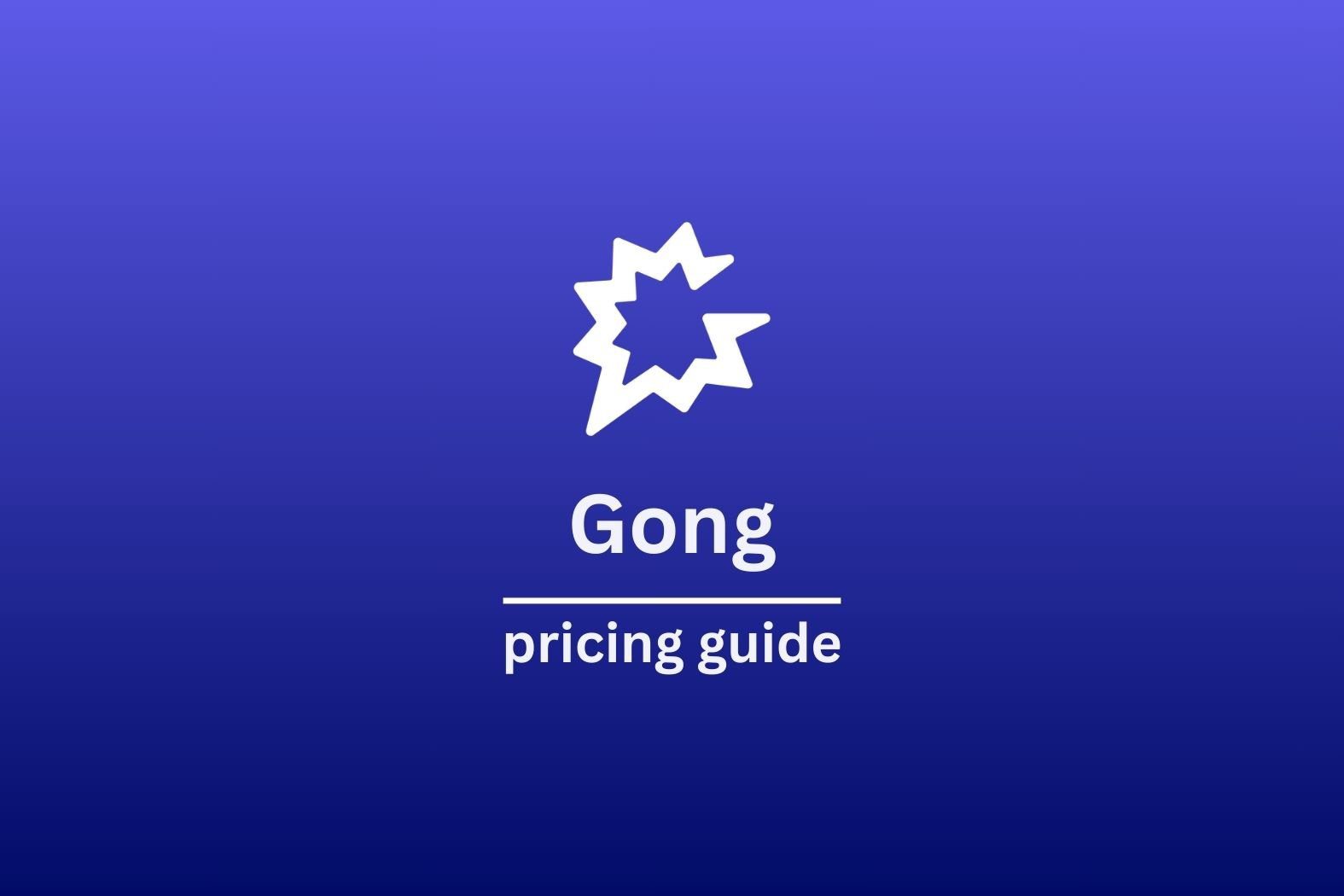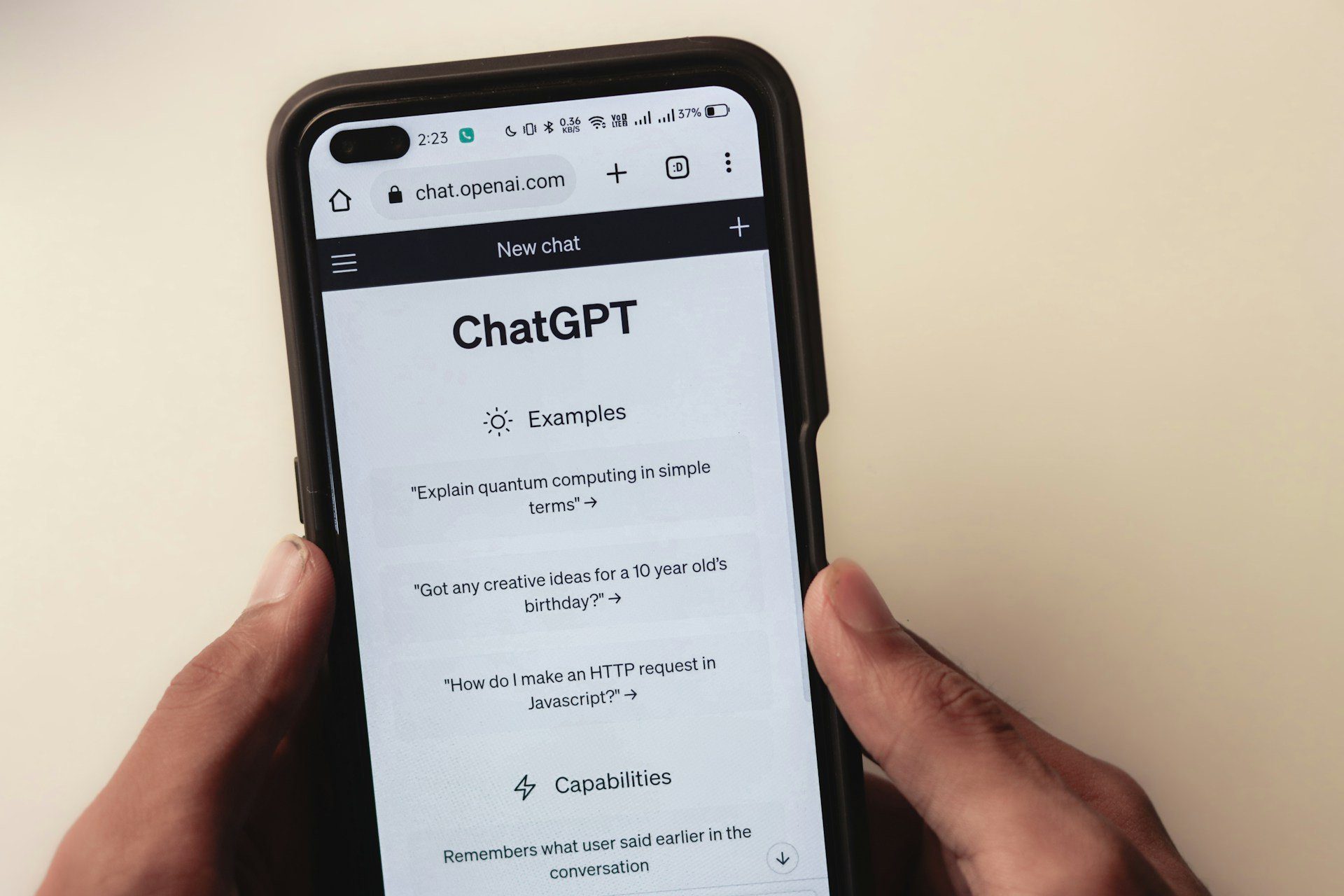Sales coaching is an ongoing process where managers help reps improve real-world selling skills.
Unlike sales training, which is often a one-time event, coaching is personalized and continuous. It’s focused on practical development, real deals, and long-term improvement.
The focus is always skill execution, not just knowledge.
Sales Coaching Isn’t Sales Training
Sales coaching and sales training serve different purposes.
Training is typically a structured, one-off event designed to deliver foundational knowledge. It’s where reps learn about product features, company messaging, sales methodologies, or systems. Training is usually delivered in group settings—through workshops, onboarding programs, or e-learning modules.
Sales coaching, on the other hand, is an ongoing, individualized process focused on improving real-world performance. It builds on the knowledge gained in training and turns it into consistent execution. Coaching is not about information—it’s about behavior. It helps reps apply skills in live selling situations, refine their approach based on feedback, and close performance gaps.
Key differences include:
- Timing: Training happens at set intervals (e.g. onboarding, quarterly enablement). Coaching happens regularly—often weekly or bi-weekly—and evolves based on rep performance.
- Format: Training is mostly one-to-many. Coaching is one-on-one or small-group, tailored to individual needs.
- Focus: Training delivers knowledge. Coaching develops skills. While training teaches a discovery framework, coaching helps a rep practice better discovery calls on real deals.
- Pacing: Training is standardized. Coaching is adaptive. One rep may need help with objection handling, another with closing. Coaching allows for targeted development.
Common coaching formats include:
- Weekly 1:1s: Focused on progress review, skill development, and problem-solving
- Call reviews: Live or recorded call analysis with real-time feedback
- Deal strategy sessions: Coaching around key opportunities, with a focus on tactics and stakeholder engagement
- Role-plays: Practicing specific parts of the sales process to build confidence and fluency
Sales coaching is what makes training stick. It’s the bridge between theory and practice, and the most effective way to drive rep performance over time.
Below you’ll see a quick video on the core differences.
Why Sales Coaching Improves Revenue, Retention, and Results
Sales coaching has a direct, measurable impact on business performance. Companies that prioritize structured, consistent coaching programs see higher revenue, better team performance, and improved employee retention.
According to the Sales Management Association, companies with effective sales coaching experience 16.7% greater annual revenue growth compared to those that don’t emphasize coaching. This is attributed to better skills application in real-world selling and stronger alignment with customer needs.
Further research shows that companies with dynamic coaching models achieve 28% higher win rates on forecasted deals. These organizations move beyond basic coaching by embedding regular, high-quality feedback loops into their sales operations.
Retention also improves significantly with regular coaching. Seismic’s 2023 Value of Enablement Report found that organizations providing consistent, on-the-job coaching achieved a 20% increase in seller retention rates. This is especially important in high-turnover sales environments, where replacing a salesperson can cost up to 200% of their annual salary.
These outcomes aren’t theoretical. Coaching helps managers catch problems early, improve individual rep performance, and raise the effectiveness of the entire team—especially the middle performers who often make up the bulk of the revenue.
By investing in structured coaching systems, businesses not only improve results in the short term but also build a more resilient, consistent sales organization over time. It’s one of the highest ROI activities available to sales leadership.

What Are Some Common Sales Coaching Frameworks?
Using structured frameworks in sales coaching helps managers stay focused and ensures coaching sessions drive real outcomes. The best frameworks are simple, adaptable, and designed to turn conversation into action.
GROW
The GROW model is widely used in performance coaching and fits well in a sales context. It structures a coaching conversation around four stages:
Goal – What is the rep trying to achieve? Example: “Close 10 deals this quarter.”
Reality – What’s happening now that supports or blocks this? Example: “Only converting 15% of proposals.”
Options – What approaches could they try? Example: “Revamp follow-up, add ROI calculator, run test with Sales Engineer.”
Will – What action will they take? Example: “Run the new process with 5 clients and report back next week.”
This model keeps sessions forward-focused and encourages reps to take ownership of solutions.
SMART
The SMART goal model is best used as a companion to GROW. It ensures that the action items a rep commits to are well-defined.
Specific – “Follow up within 24 hours after each demo”
Measurable – “Track email opens and replies”
Achievable – Based on current workload and tools
Relevant – Tied to the rep’s conversion goals
Time-bound – “Do this for all demos this month”
OSKAR
The OSKAR model (Outcome, Scaling, Know-how, Affirm, Review) works well for continuous development:
Outcome – Begin by setting a clear, specific goal. This gives the session direction and ensures both coach and rep are aligned on what success looks like.
Scaling – Ask, “On a scale of 1 to 10, where would you place yourself now?” This encourages honest self-assessment and opens up a conversation about gaps and opportunities.
Know-how – Explore what’s already working. Identify strategies, skills, or behaviours the rep is using successfully. This reinforces confidence and builds on existing strengths.
Affirm – Highlight and affirm the rep’s capabilities, progress, and potential. Recognition plays a key role in motivation and mindset, especially when growth feels incremental.
Review – In the next session, revisit the original goal and scaling score. Discuss progress, reflect on what’s changed, and agree on what comes next.
OSKAR is ideal when tracking skill improvement over time, particularly for reps who benefit from self-reflection.
Using one or two consistent frameworks across your team helps drive coaching quality without overcomplicating the process.
Running High-Impact 1:1 Coaching Sessions
Effective 1:1 sales coaching sessions are short, focused, and structured. They’re not for pipeline reviews or admin—they’re time set aside for skill development and performance improvement.
A 30-minute weekly cadence works well when the format is consistent and intentional. The goal: identify one area for improvement, provide feedback, and agree on next steps.
Recommended 30-Minute Agenda
- 5 minutes – Check-in and Wins
Start on a positive note. Ask how the rep is doing and recognize any progress.
Example: “What’s one thing that went well this week?” - 10 minutes – Review Metrics and Past Actions
Look at relevant data: calls made, conversion rates, follow-up activity, or specific KPIs tied to prior goals.
Ask questions like:- “Did you complete last week’s action item?”
- “What results did you see from that change?”
Use CRM data or call analytics to keep this grounded.
- 10 minutes – Skill or Deal-Focused Coaching
Choose one focus area. This might be a skill gap (e.g., qualifying leads) or a high-impact deal needing support.
Examples:- Review a recent call or email together
- Work through a stalled deal and strategize next steps
- Practice part of a pitch or objection handling
- 5 minutes – Agree on Next Steps
Summarize the session and set 1–2 clear actions with deadlines.
Examples:- “Refine your pricing explanation and test it in two calls by Friday”
- “Send follow-up emails using the new structure this week”
1:1 Coaching Session Cheat Sheet
Use this format to guide every 1:1 coaching session. It keeps the conversation focused, consistent, and productive.
- Start with a win (5 minutes)
Begin on a positive note. This sets the tone and builds momentum.
Ask: “What went well this week?” or “What’s something you’re proud of?”
Recognize effort or progress—even small steps count.
If applicable, tie the win to a previous coaching action. - Review metrics and last week’s actions (10 minutes)
Look at performance data relevant to the rep’s role and coaching focus.
Examples: calls made, meetings booked, conversion rates, deal stage progress
Ask:- “Did you complete the action from last week?”
- “What impact did it have?”
Discuss any challenges or blockers that came up.
- Focus on one skill or deal (10 minutes)
Choose a single development area per session—depth is better than breadth.
Skills-based: objection handling, demo delivery, discovery questions
Deal-based: pipeline strategy, stakeholder alignment, next steps
Use real examples—calls, emails, live deals—to make feedback specific and practical.
Incorporate frameworks like GROW if helpful. - Set clear next steps (5 minutes)
End with actionable commitments. Keep it simple and specific.
Examples:- “Use the new demo outline in 3 upcoming calls”
- “Book a second meeting with the stalled lead and apply new qualifying questions”
Write it down so both manager and rep can follow up next time.
Stick to this structure and keep a running log of each session. Over time, you’ll build a clear coaching history and track the rep’s development more effectively.
How to Personalize Sales Coaching for Different Reps
Sales coaching is most effective when it’s tailored to the individual. One-size-fits-all coaching leads to wasted time and missed growth opportunities. To coach well, managers need to understand each rep’s skill level, motivation, and learning style—and adjust accordingly.
1. Segment by Skill Level
Junior reps are often building core sales skills—discovery, objection handling, basic deal management. They benefit from structured guidance, repetition, and hands-on practice.
Best formats: role-plays, live call reviews, short-term goals with quick feedback loops.
Example: If a new rep struggles with cold calls, walk through a few live recordings and role-play the opening 30 seconds. Focus on confidence and clarity before layering in nuance.
Senior reps, by contrast, usually don’t need foundational skills—they need refinement. Focus their coaching on deal strategy, stakeholder mapping, negotiation tactics, or leadership development.
Best formats: peer reviews, strategic deal discussions, coaching led by the rep (you ask more, tell less).
Example: For a senior AE working on a multi-threaded deal, ask them to map out the buying committee and lead the conversation. Your role is to challenge gaps and expand their thinking.
2. Segment by Motivation
What drives a rep will shape how they engage with coaching.
- Money-driven reps respond well to coaching that ties to comp plans and short-term wins. Use deal metrics and income impact to make coaching relevant.
- Mastery-driven reps want to improve skills. Give them feedback, frameworks, and resources—plus space to experiment and learn.
- Promotion-driven reps want visibility and career progression. Frame coaching around leadership readiness, cross-functional collaboration, or mentoring others.
Tip: Ask directly—“What’s your biggest driver right now?” Use the answer to shape your coaching goals and language.
3. Segment by Learning Style
People absorb and apply information differently. Adapting to learning styles makes coaching stick.
- Hands-on learners benefit from role-plays, shadowing, and practicing in the moment. Don’t just explain—have them try it live.
- Analytical learners want data and structure. Use metrics, dashboards, and deal-stage analysis to guide the session.
- Auditory/verbal learners may prefer discussing scenarios, explaining their process aloud, or storytelling.
Example: If one rep learns best through doing, run five-minute call simulations each week. If another prefers analysis, review win/loss data together and spot trends.
Sales Coaching With Data: Metrics That Matter
Data transforms coaching from vague feedback into targeted development. Instead of relying on assumptions or generic advice, sales leaders can use real metrics to understand performance gaps and focus their sessions on the areas that matter most.
Here are the most useful metrics for coaching individual reps:
Core Sales Metrics to Track
Win Rate
The percentage of closed-won deals versus total opportunities.
Use it to: Spot who needs help closing. If win rates are low despite good pipeline coverage, coach on proposal delivery, objection handling, or negotiation.
Pipeline Coverage
The ratio of pipeline value to quota (e.g., a 3:1 pipeline for a monthly $50k target).
Use it to: Identify early-stage challenges. Low coverage means coaching should focus on prospecting, outreach, or qualification strategy.
Stage Conversion Rates
The percentage of deals moving between key stages (e.g., discovery → demo, demo → proposal).
Use it to: Pinpoint breakdowns in the sales process and address specific skills like discovery questioning or demo delivery.
Demo-to-Close Ratio
How many demos result in closed deals.
Use it to: Coach around value communication and follow-up. A weak ratio often means the rep is presenting well but not aligning with the buyer’s goals.
Call Talk Ratio
The percentage of talk time the rep holds during a sales call.
Use it to: Improve listening and discovery techniques. A high ratio (e.g., 80% rep talk time) suggests the rep may not be asking enough open-ended questions.
Putting Data Into Practice
Start each 1:1 with a quick review of key metrics. Ask:
- Where are conversion rates lagging?
- Is pipeline healthy and balanced?
- What’s the trend in recent call behavior?
Use the answers to set a focused coaching objective. One metric. One skill. One improvement plan.
This approach keeps coaching clear, actionable, and measurable, exactly what high-performing reps need to improve.

Using tl;dv for Coaching Insights
Sales coaching works best when it’s tied directly to what reps are doing in real conversations—how they pitch, handle objections, or respond to buyer signals. tl;dv gives managers full visibility into sales calls, along with built-in tools to review, analyze, and coach more effectively.
Instead of attending calls live, managers can use tl;dv to review recordings asynchronously. Calls are transcribed automatically with speaker labels, timestamps, and summaries. This helps managers jump straight to the moments that matter without wasting time.
Key Coaching Features in tl;dv
Talk ratios and topic tracking
tl;dv shows how much each person spoke and which themes dominated the conversation. If a rep is talking 80% of the time during a discovery call, that’s a coaching opportunity around listening and qualification. You can also identify if important topics like pricing or competitor mentions are being skipped or poorly handled.
Timestamped feedback
Managers can leave comments on exact call moments that need work or deserve praise. Reps can rewatch those specific segments, so feedback is clear and targeted. This saves time and helps reinforce learning.
Progress tracking over time
Call recordings give you a history of how a rep is developing. You can compare early-stage performance to more recent calls to assess whether coaching efforts are making an impact. It also helps reinforce progress and keep momentum going.
Coaching Tools Built Into tl;dv
In addition to call analysis, tl;dv includes coaching-specific features to support performance improvement:
- AI-generated scorecards highlight key strengths and areas to work on, based on recorded calls.
- Objection handling guides provide consistent responses and help reinforce training through real-life examples.
- Sales methodology tagging allows teams to align feedback with frameworks like BANT or MEDDICC, making it easier to structure coaching sessions.
Sales Coaching Tools to Support Performance Improvement
The right tools make sales coaching more efficient, consistent, and actionable. While coaching is a human-led activity, software can support the process by capturing insights, tracking progress, and reinforcing behaviors between sessions.
Below are four categories of tools that help drive coaching outcomes without adding unnecessary complexity:
1. Conversation Intelligence
Example: tl;dv
These tools record, transcribe, and analyze sales calls. Managers can review calls, leave timestamped feedback, and spot patterns in rep performance. Conversation intelligence platforms help identify specific coaching opportunities—such as excessive talk time, weak discovery, or missed buying signals—without needing to attend every call live.
2. CRM Dashboards
Examples: Salesforce, HubSpot
Dashboards built into CRM systems surface performance metrics like win rates, pipeline coverage, and stage conversion rates. Managers can track each rep’s progress and use the data to structure coaching sessions. Having this information easily accessible helps coaching stay objective and focused on behaviors tied to revenue.
3. Coaching Trackers or Logs
Examples: Google Sheets, Notion, Excel, or CRM-integrated notes
Simple tools for documenting coaching conversations and tracking rep progress over time. This can be as basic as a shared spreadsheet or notes field in the CRM. The key is to keep a record of action items, skill focus areas, and follow-ups so coaching is consistent and accountable.
4. Learning Management Systems (LMS)
Examples: Lessonly, 360Learning, WorkRamp
LMS platforms provide on-demand training materials that support coaching outside of 1:1s. Managers can assign relevant courses or exercises based on coaching conversations, reinforcing learning and giving reps structured follow-up between sessions.
Scaling Your Sales Coaching Program
To move from ad-hoc coaching to a consistent, scalable program, you need structure, manager enablement, and measurable standards. The goal is to ensure every rep receives quality coaching, no matter who their manager is.
Train and Enable Front-Line Managers
Your coaching program depends on your managers. Many were promoted for their selling skills, not their coaching ability—so they need support. Provide clear expectations, frameworks like GROW, and practical training on how to give feedback, review call data, and set development goals.
It also helps to model coaching. Run calibration sessions, record example 1:1s, and give managers feedback on their coaching conversations.
Establish a Standard Cadence and Agenda
Consistency is key. Without it, coaching becomes optional—and results drop.
Recommend a minimum of two 30-minute coaching sessions per rep per month. Use a simple structure for each session:
- Quick check-in and recent wins
- Review key performance data
- Focus on one skill or deal
- Set 1–2 follow-up actions
This structure ensures sessions are efficient, repeatable, and always tied to outcomes. You can provide an agenda template or coaching sheet to make preparation easier for managers and reduce guesswork.
Track Coaching Activity and Quality
Set a few coaching KPIs to monitor progress and drive accountability. For example:
- # of coaching sessions per manager, per month
- % of reps receiving bi-weekly coaching
- Manager coaching effectiveness score (from rep feedback or performance lift)
If you use a coaching tracker, CRM notes, or a tool like tl;dv, these metrics are easy to collect.
When coaching is tracked, supported, and structured, it becomes a habit across the org—not just a nice-to-have. That’s when it starts delivering compounding results.
How To Track ROI From Sales Coaching
To justify time and resources, sales coaching needs to show business impact. Fortunately, the return on investment is measurable when you track the right metrics and apply straightforward calculations.
Focus on a few core outcomes that connect coaching to bottom-line results:
1. Revenue Increase
Even small improvements in win rate can drive significant revenue growth.
Example:
- If your team has a $10M quarterly pipeline and a 20% win rate, that’s $2M in closed revenue.
- If coaching lifts the win rate to 25%, revenue increases to $2.5M.
- That’s a $500,000 gain per quarter, directly tied to coaching effectiveness.
Look for trends after coaching initiatives, such as improved deal conversion rates or increased average deal size.
2. Quota Attainment
Track what percentage of reps are hitting quota before and after implementing structured coaching.
Example:
- Before coaching: 50% of reps hitting quota
- After coaching: 65%
- A 15-point lift means more reps contributing to the team target—and fewer gaps to cover with top performers.
This also reduces risk in forecasting and helps spread performance more evenly across the team.
3. Rep Retention
Good coaching improves engagement and reduces turnover, which has a major cost impact.
Example:
- If coaching reduces rep churn from 25% to 15%, and the average replacement cost per rep is $100,000 (lost revenue, hiring, training), you’re saving $100,000+ per rep retained.
You can also survey reps with simple questions like:
- “Do you feel supported in your development?”
- “Has coaching helped you improve specific skills?”
Positive shifts here are often early indicators of retention gains.
4. Ramp Time for New Hires
A structured coaching program accelerates productivity for new reps.
Example:
- If your current ramp time is 6 months, and coaching reduces it to 5, you’re gaining one extra month of selling per rep.
- Multiply by average rep revenue to calculate savings.
$50K/month x 10 new hires = $500,000 gained in productivity.
Sales Coaching is a Performance Driver, Not a Soft Skill
Sales coaching is a core part of revenue operations. When done consistently and based on real data, it raises win rates, shortens ramp time, improves rep retention, and leads to stronger, more predictable results.
It’s a process that can be measured, repeated, and improved. Companies that coach regularly and effectively outperform those that don’t. The return shows up in quota attainment, pipeline growth, and lower team turnover.
Coaching should be treated like any other performance lever: scheduled, documented, and supported with the right tools.
If you’re looking to bring structure and visibility to your coaching efforts, tl;dv gives you the platform to do it. It integrates into your daily sales meetings, captures critical moments, and helps managers deliver timely, targeted feedback that sticks.
Start using tl;dv to scale high-impact coaching across your team.
FAQs About Sales Coaching
What is sales coaching?
Sales coaching is a personalized, ongoing process where sales managers or coaches work one-on-one with sales representatives to enhance their performance. Unlike one-time training sessions, coaching focuses on continuous development, addressing specific challenges, and refining skills through regular feedback and guidance.
Why is sales coaching important?
Effective sales coaching can lead to significant improvements in sales performance, including higher win rates, increased revenue, and better quota attainment. It helps sales reps develop critical skills, adapt to market changes, and stay motivated, ultimately contributing to the overall success of the sales organization.
How does sales coaching differ from sales training?
Sales training is typically a structured program designed to teach specific skills or knowledge to a group of salespeople, often in a one-time or periodic setting. Sales coaching, on the other hand, is an ongoing, individualized process that focuses on reinforcing and enhancing those skills through regular interactions, feedback, and tailored development plans.
What are some effective sales coaching techniques?
Effective sales coaching techniques include:
- Recording and reviewing sales calls to identify strengths and areas for improvement
- Encouraging self-evaluation to build self-awareness
- Creating specific, measurable action plans
- Focusing on one improvement area at a time
- Building trust through open, authentic communication
How can the effectiveness of sales coaching be measured?
The effectiveness of sales coaching can be assessed using metrics such as:
- Revenue growth
- Quota attainment
- Win rates on deals
- Employee retention
- Ramp-up time for new hires
Who should be responsible for delivering sales coaching?
Sales coaching is typically delivered by front-line sales managers, as they have direct insight into their reps’ day-to-day performance. However, enablement teams can play a supporting role by providing frameworks, resources, and tools to help managers coach more effectively. In some organizations, dedicated sales coaches or external consultants are also involved.
How often should sales coaching sessions take place?
Ideally, sales coaching should happen on a regular cadence—weekly or bi-weekly works well for most teams. Consistency is more important than duration. Even short 30-minute sessions can be highly effective when they’re structured, focused on real opportunities, and followed up with clear action items.





